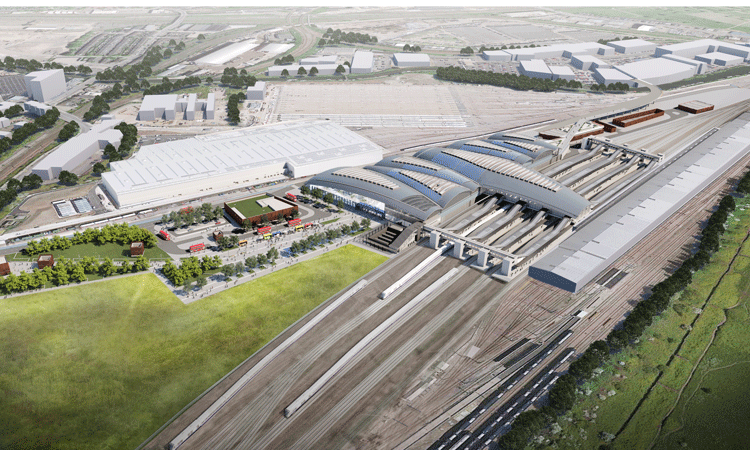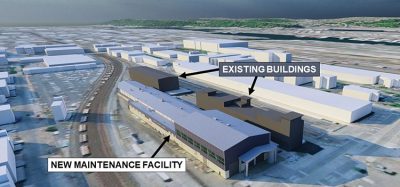New homes could benefit from green energy sourced from HS2
Posted: 18 March 2019 | Global Railway Review | No comments yet
According to HS2 Ltd, the company building Britain’s new high-speed rail network, heat recycled from high-speed trains could power hundreds of new homes.


Old Oak Common’s crossover box is capable of supporting waste heat recovery technology. Credit: HS2 Ltd
In an innovative first, engineers developing the new HS2 station at Old Oak Common in north west London have outlined plans to tap waste heat from the brakes and engines of high-speed trains to power hot water and central heating of up to 500 new homes that could be built nearby.
The scheme would see five air source heat pumps draw warm air from the railway’s tunnels, where the waste heat from trains is usually extracted by traditional ventilation systems and seeps into the ground surrounding the tunnels. Instead the plans from HS2 Ltd would see waste heat fed into a local District Heating System.
With an estimated 250,000 people passing through every day, the new HS2 station at Old Oak Common is set to be the UK’s best-connected rail interchange. It will help kick-start the UK’s largest regeneration project, which aims to transform the former railway and industrial area, into a new neighbourhood supporting up to 65,000 jobs and 25,500 new homes (figures published by the Old Oak & Park Royal Development Corp).
Pablo García, HS2 Innovation Manager, said: “HS2 is so much more than a railway. By taking a long-term view of how the benefits of investing in the new high-speed railway can be shared, we’re investigating how to provide sustainable, low-carbon heating and hot water to up to 500 new homes.”
He continued: “Near Old Oak Common we’re building a crossover box. This is an underground hall that houses railway points to enable trains to arrive and depart from any of the station’s platforms. Our plans would see warm air pushed into the crossover box by trains, in effect acting like pistons. It then rises to be harnessed by air source heat pumps, converted into hot water and transported to homes by insulated pipes.”
Based on current energy price forecasts, HS2 estimates that the investment waste heat recycling system would pay for itself after just four years.
Compared to gas boilers being used in the homes, recycling heat generated by trains’ engines and brakes could reduce the carbon footprint of 500 houses by more than a fifth (22 per cent).
Although the technology is proven, plans are at an early stage. Pablo explained how Old Oak Common’s crossover box is the only place on HS2’s first section between London and the West Midlands capable of supporting waste heat recovery technology, but there may be further opportunities on the high-speed network’s Leeds and Manchester routes: “Our study focused on possible Phase One opportunities because its designs are most advanced. Designs for the second phase of the railway are at an earlier stage, and we hope to look at whether waste heat recovery technology could be deployed there too.”







